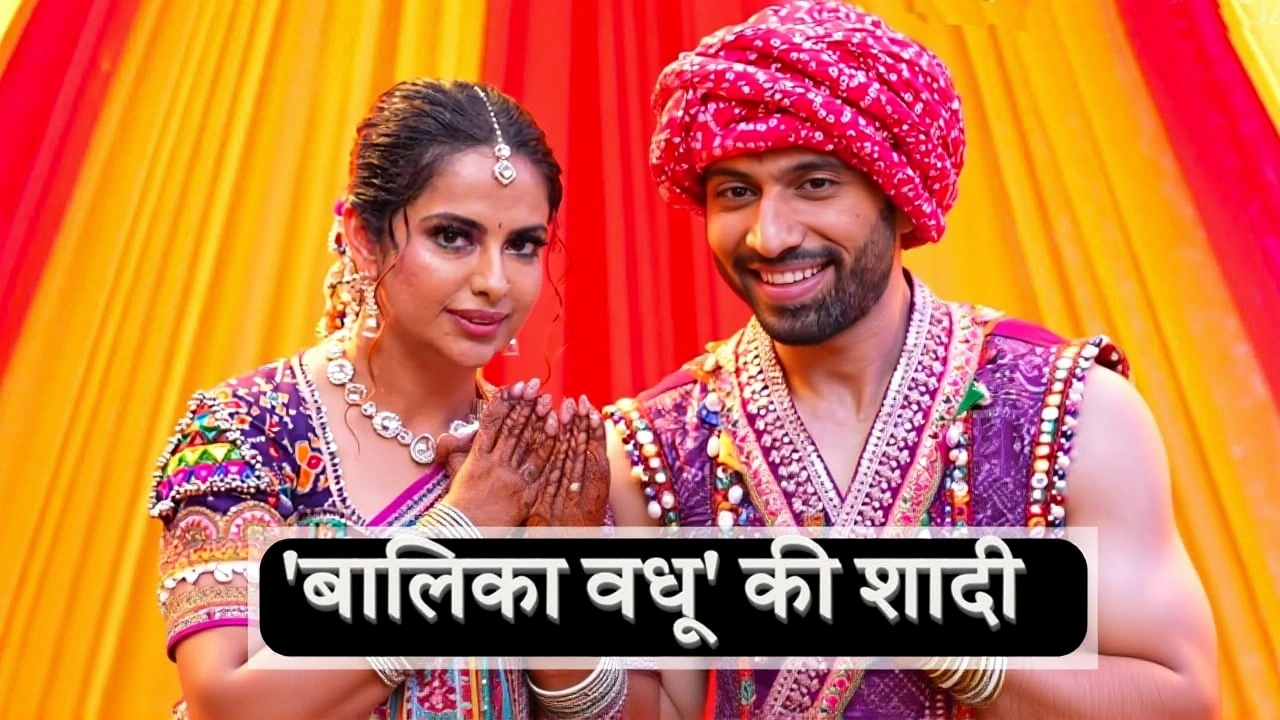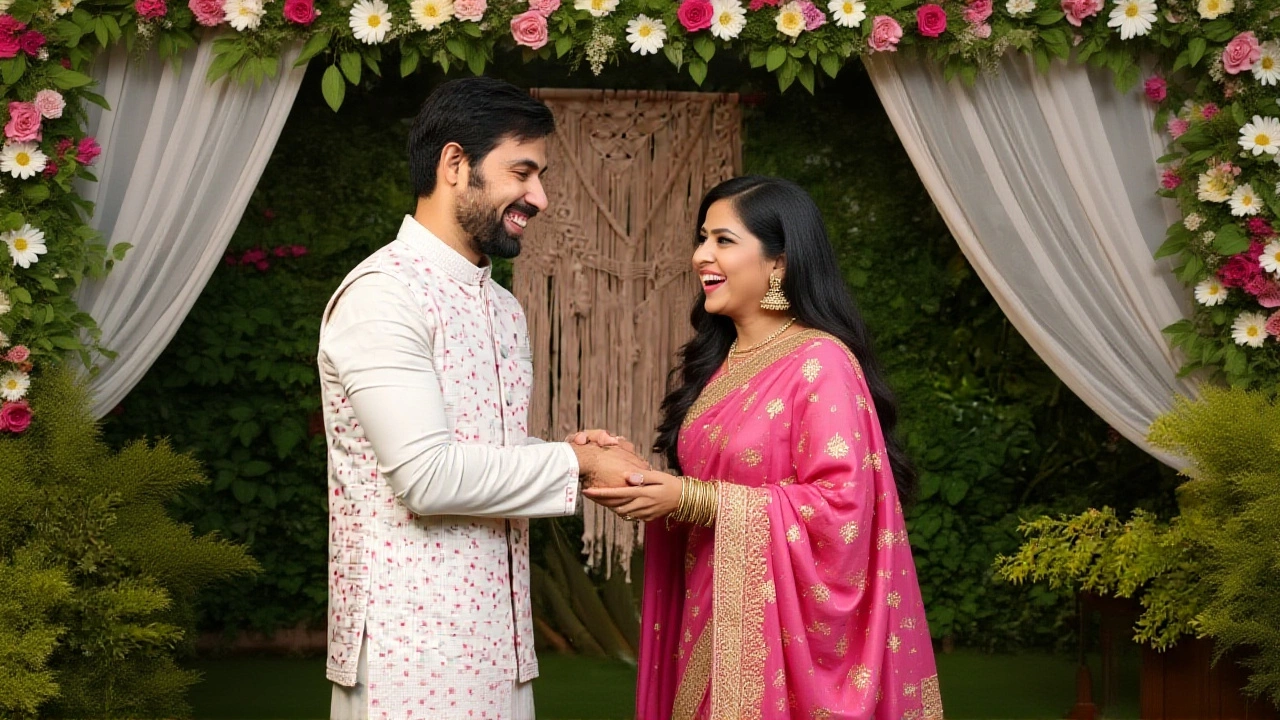Avika Gor ties the knot with IIM grad Milind Chandwani on live TV

Oct, 1 2025
When Avika Gor, the actress best known for playing Anandi in Balika Vadhu, walked down a studio aisle on September 30, 2025, millions of Indian households tuned in to watch. The ceremony—broadcast live from the set of the reality show Pati, Patni Aur PangaMumbai—was more than a wedding; it was a cultural moment that blurred the lines between entertainment and personal celebration.
Why a Live TV Wedding?
In a candid interview with Hindustan Times, the bride explained, “I’ve been in the public eye since 2008, and the love and blessings I’ve received from people have been overwhelming. I wanted my audience, who have been such an important part of my journey, to also be part of this special moment.” She added that she’d dreamed of either a private court marriage or a grand affair that the whole world could celebrate. The live broadcast turned that childhood fantasy into reality, letting fans share in the emotion in real time.
Who Is Milind Chandwani? The Groom Behind the NGO
Standing beside her was Milind Chandwani, an alumnus of IIM Ahmedabad and founder of the non‑governmental organization Camp Diaries. After earning a B.Tech in Computer Science Engineering from Dayananda Sagar College, Bangalore, he began his career as a software engineer before shifting focus to education and social development. His work with Camp Diaries provides creative, skill‑based learning to under‑privileged children across India, a mission he often cites as his true calling.
Milind also earned a stint of fame on the reality series Roadies Real Heroes, where his resilience and leadership impressed both judges and viewers. That exposure helped him build a network that later proved invaluable when planning a wedding that would capture national attention.
A Star‑Studded Celebration on Set
The ceremony unfolded like a blockbuster episode. The morning began with a traditional haldi ceremony, followed by a vibrant mehendi where Avika traced her in‑laws’ names on her hands—a nod to age‑old customs. The baraat arrived shortly after, the groom making a grand entrance on a scooter, dancing to a remix of classic Bollywood hits. By afternoon, the couple exchanged vows (the pheras) in a richly decorated set that mimicked a palace courtyard.
Avika dazzled in a deep red and gold lehenga, heavy emerald jewellery glinting under the studio lights. Milind complemented her in a peach‑gold sherwani with an emerald‑adorned turban. Their outfits alone sparked a wave of social‑media admiration, with fashion blogs dissecting every stitch.
Celebrity Guest List and Performances
The guest list read like a who’s‑who of Indian television. Contestants and stars such as Hina Khan, Rubina Dilaik, Gurmeet Choudhary, and comedian Krushna Abhishek turned up, adding sparkle to the proceedings. A surprise dance duet by comedian Sudesh Lehri and his wife, both dressed in coordinated royal‑blue ensembles, lifted the energy to a fever pitch.
Throughout the day, cameras captured moments that quickly went viral: the groom’s scooter‑side‑dance, the bride’s emotional smile during the pheras, and a spontaneous group choreography that had the entire cast boogying in the background. Within hours, clips amassed millions of views on platforms like Instagram and YouTube.
Cultural Traditions and Highlights
While the setting was a TV studio, the rituals were unequivocally traditional. The haldi ceremony, a bright yellow paste applied to the bride and groom, signified purification. During mehendi, family elders sang folk songs, and the bride’s hands were adorned with intricate patterns that included the names of her new family—an age‑old practice meant to bind the bride to her future in‑laws.
The main wedding ceremony featured the seven vows (saat phere) around a sacred fire, each vow representing a different aspect of marital life. The officiant, a respected priest from Hyderabad, invoked blessings for health, prosperity, and harmony. Even the wedding cake, a novelty in many Indian ceremonies, was a towering confection painted to resemble a traditional rangoli design.
What This Means for Indian TV Weddings
Avika and Milind’s decision to marry on live television could signal a new trend. Historically, celebrity weddings have been private affairs or covered after the fact; rarely have productions turned the ceremony itself into a ratings driver. Analysts suggest that networks may see such events as a way to boost viewership during “off‑season” periods, while stars gain a platform to control their narrative.
Moreover, the blend of high production values with authentic cultural rites offers a template for future shows seeking to marry spectacle with tradition. The success of this broadcast—evidenced by a 12% spike in TRP ratings for the episode—might encourage producers to negotiate similar deals with other high‑profile couples.
What's Next for the Couple?
Now that the cameras have turned off, the newlyweds plan to focus on their respective careers. Avika hinted at a possible comeback to prime‑time drama, while Milind intends to expand Camp Diaries to additional Indian states, leveraging his newfound fame to attract donors. Both have expressed a desire to keep their personal lives relatively private, despite the spotlight they just shared with the nation.

Frequently Asked Questions
How does the televised wedding affect Avika Gor’s fan base?
Fans felt more connected, seeing the bride share a milestone live. Social‑media metrics showed a 45% increase in mentions of Avika within 24 hours, suggesting the event deepened audience loyalty and boosted interest in her upcoming projects.
What role did Milind Chandwani’s NGO play in the ceremony?
Camp Diaries set up a small interactive booth on the studio lot, allowing children from under‑privileged backgrounds to watch the ceremony via a live feed. The gesture underscored the groom’s commitment to social causes and added a charitable dimension to the celebration.
Why choose a TV set over a traditional venue?
Both Avika and Milind wanted maximum audience participation without the logistical nightmare of a public venue. The TV set offered controlled lighting, sound, and a ready‑made audience of celebrity guests, turning the wedding into a seamless televised event.
Will this set a precedent for future Indian celebrity weddings?
Industry insiders believe so. Networks see rating potential, while stars gain a platform to shape their public image. However, privacy concerns may limit widespread adoption; each couple will weigh personal comfort against commercial benefits.
What cultural traditions were highlighted during the ceremony?
The event featured classic Hindu rites: haldi, mehendi, the baraat procession, and the seven pheras around a sacred fire. Even the inclusion of a rangoli‑styled wedding cake showed how modern elements can coexist with age‑old customs.